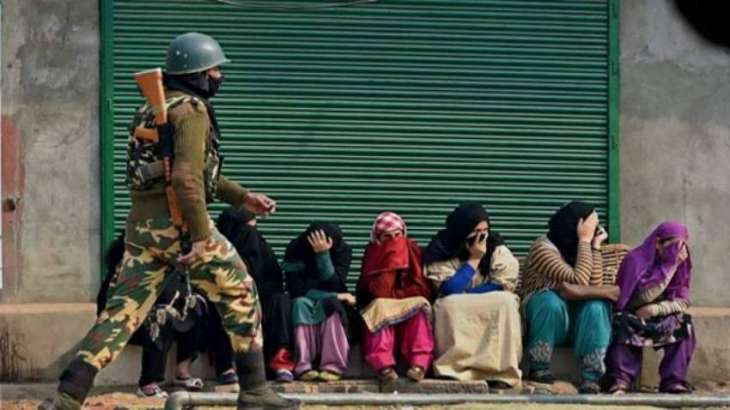Dr Shagufta Ashraf
Kashmiri women are the biggest victims of the ongoing conflict. They have suffered human rights abuses under the impunity of the suffocating Indian military presence in Indian illegally occupied Jammu and Kashmir (IIOJK).
According to statistics from Jammu and Kashmir state commission from women, a now defunct government institution is established to protect women and children rights to ensure quick prosecutions.
Cases of domestic violence and general violence have been rising more than three thousand a year during the previous clampdowns in 2016 and 2017.
Let us view this problem, in the light of the Universal Declaration of Human Rights 1948. Since the founding of the United Nations, gender equality is the foremost agenda and has been among the most fundamental guarantees of human rights.
Adopted in 1945, the Charter of the United Nations sets out as one of its goals “to reaffirm faith in fundamental human rights, in the dignity and worth of the human person, [and] in the equal rights of men and women”.
Furthermore, Article 1 of the Charter stipulates that one of the purposes of the United Nations is to promote respect for human rights and fundamental freedoms “without distinction as to race, sex, language or religion”.
This prohibition of discrimination based on sex is repeated in its Articles 13 (mandate of the General Assembly) and 55 (promotion of universal human rights).
In 1948, the Universal Declaration of Human Rights was adopted. It, too, proclaimed the equal entitlements of women and men to the rights contained in it, “without distinction of any kind, such as … sex,”.
In drafting the Declaration, there was considerable discussion about the use of Women’s Rights Are Human Rights of the term “all men” rather than a gender-neutral term.
The Declaration was eventually adopted using the terms “all human beings” and “everyone” in order to leave no doubt that the Universal Declaration was intended for everyone, men and women alike.
I would like to discuss the status of women rights in conflicts. Different Indian governments during the past seventy three years have architected the present disturbing scenario in IIOJK.
The situation has worsened ever since the present government has assumed office in Delhi in 2014.
This government systematically implemented a muscular policy and a doctrine of state is quelling the rebellion by force. This policy change has dangerous implications.
On 5th August 2019, India launched its intended assault to fracture IIOJK in two union territories. This scenario should be kept in mind when we are discussing women rights in IIOJK.
Ever increasing number of widows and half widows in IIOJK is a matter of great trauma as it reduces the grace and color of life of a woman.
There is a long way to get freedom for women from the clutches of suppression and humiliation committed against them. Women of IIOJK die in silence.
The economic, social and psychological status of widows devastates under the social patriarchy and inequality. In most of the cases she loses the property rights.
There is no existence of initialization and rehabilitation. Most of the widows and half widows are from poor families.
Half widows are such women whose husbands are subjected to enforced disappearances but have not been declared dead. These half widows live in isolation with little or no social or financial support.
Most of the half widows have not remarried due to doubt about their husband’s fate and lack of consensus among Muslim scholars on this issue.
According to a Kashmiri sociologist, Dr Bashir Ahmed Dabla, the conflict has affected women and children more than any other group or class especially widows and orphans.
United Nations Security Council has stressed the need to survey and compensate women in IIOJK, whose husbands have been killed or maimed.—KMS










